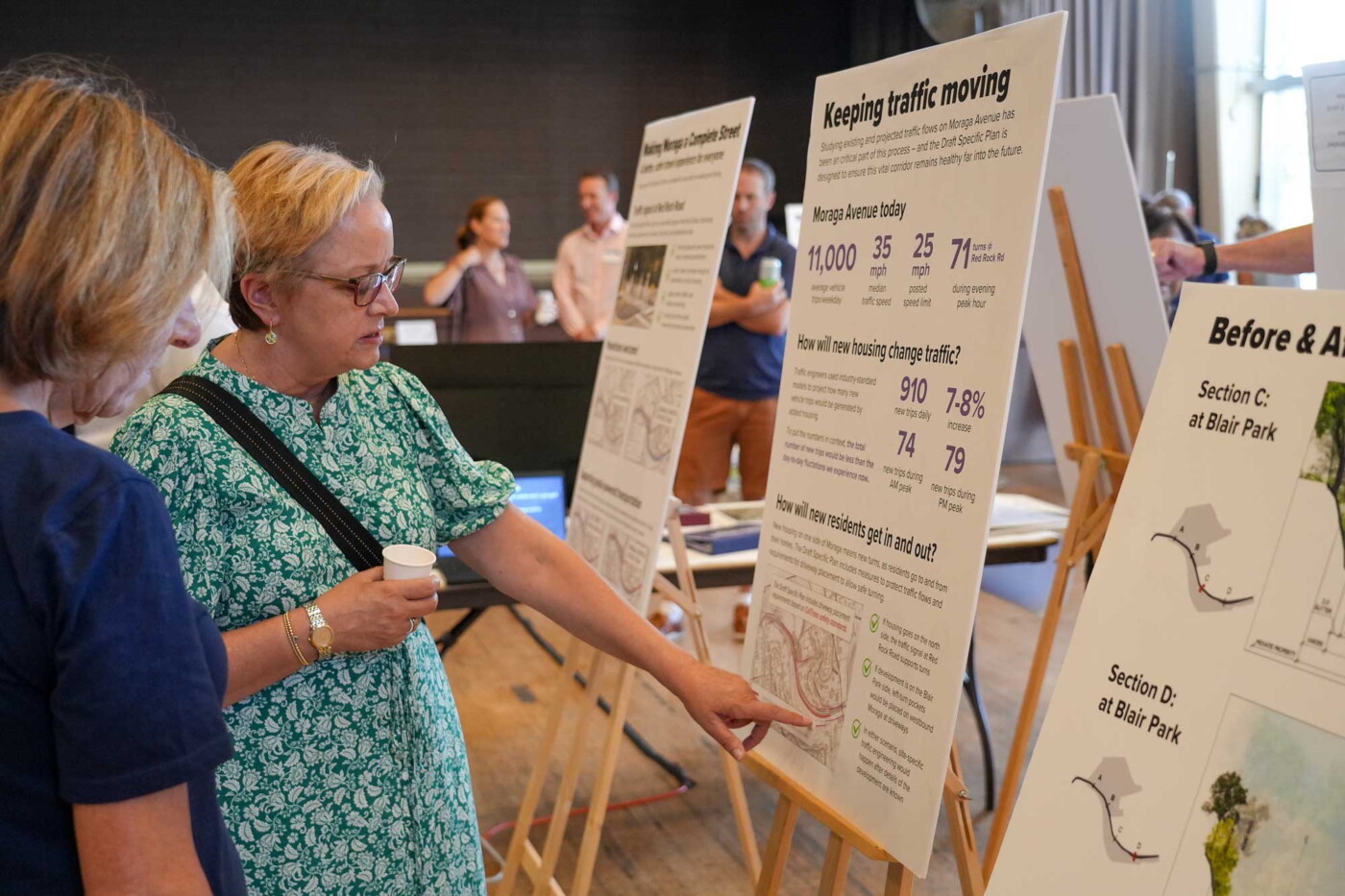An overflow crowd was in attendance at City Hall chambers on Monday night as Piedmont’s City Council unanimously adopted the Moraga Canyon Specific Plan, a framework for developing new housing in the Moraga Canyon area that has been years in the making. The vote is a significant milestone for the city as it works to meet a state housing mandate for Piedmont to add 587 new housing units by 2031.
The Plan does not propose a specific development project but rather outlines the guidelines for land use and site design, design standards, safety requirements, and financing for what could be built in the future. The Planning Commission unanimously voted to recommend the Council adopt the Specific Plan, with revisions that clarify expectations around traffic safety measures, noise impacts, and fire access roads, at a public hearing in September. The city hopes that the plan will attract a developer to build at least 130 new housing units in the area, including at least 40% that would be affordable for lower income households.
The MCSP outlines two development scenarios, one where housing is built off of Red Rock Road above Coaches Field and where the city’s Corporation Yard now sits, and the other on land across the street in Blair Park. Part of the MCSP includes making pedestrian and bike lane improvements to Moraga Avenue, as well as improving sight distances related to driveways and adding more signals at key intersections. What ultimately gets built will depend on future negotiations between a prospective developer and the city.
The Council meeting clocked in at four hours as the Councilmembers listened to a presentation by city staff and consultants, heard public comment, discussed various aspects of the proposal, and ultimately made only a minor modification related to private useable space (ie. balconies) in the Plan before voting.
Not everyone is on board with the MCSP, and resistance to the idea in some pockets of the city has persisted since 2023. Most recently, an organized group of Piedmont and Oakland residents who live along or near Moraga Avenue have petitioned the city to reject the plan, citing concerns about traffic and safety, especially in the event of a wildfire or other emergency. These and similar concerns were captured in survey results and letters to the city that were included in the city’s 600+ page staff report. Some residents reiterated their concerns at the meeting on Monday.
“The issue of safe passage is always about the entire regional network, not just Moraga Avenue,” Piedmont’s Fire Chief Dave Brannigan told councilmembers. “This plan offers a structural opportunity to enhance our overall resilience.” He said that new structures built with the latest fire resistant materials will be a far lower risk than the unimproved properties in the area, and that strict, enforceable requirements for vegetation management within the project boundaries will actively reduce fuel load in the area, and that new bicycle and pedestrian pathways will improve evacuation options. “The Moraga Canyon Specific Plan is not a risk imposed on our safety,” he said, “it is an opportunity to require modern, enforceable risk mitigation measures. This plan sets an example.”
Residents who live along Moraga Avenue frequently cited traffic bottlenecks on the roadway and in adjacent streets as a source of concern, and many referenced the 1991 Oakland Hills fires in their emails to the city over the last two years. Piedmont’s Chief of Police Frederick Shavies told councilmembers that traffic and evacuation plans are better than they were in past decades, citing technological advances such as integrating live data from traffic cameras, AC Alerts and 911 systems. “Public safety doesn’t stop at our city limits,” he said, citing the importance of collaboration with City of Oakland, CalFire, California Highway Patrol, ACSO, and the Piedmont community in the event of an emergency.
Despite opposition from some corners of the city, local housing advocates lauded the city’s commitment to adding new housing units to Piedmont, and a number turned out to say so at the meeting.
“I have to say that the conversation we just heard is incredibly impressive, said Carol Galante, a Piedmont resident, founder of UC Berkeley’s Terner Center for Housing Innovation, and a former housing official in the Obama administration. “You’ve done a lot of great work, [the Plan] has come a long way, and you’ve made changes to make it more feasible to get it built. As you go into the next steps, keep the idea of flexibility in mind,” she said, “particularly, there are still some requirements that are excessive from an affordable housing developer’s perspective,” she said.
Mayor Betsy Smegal Andersen acknowledged the lengthy process that led to Monday’s vote, a process that began well before official work began on the MCSP in 2023. “This is a such a significant step for our community. We need to appreciate that we’ve never done this before,” she said. “This is an exciting time for the Piedmont to be looking at a plan to be building more housing and adding more residents,” she said.
You can read the Draft Moraga Canyon Specific Plan and view video and materials from past meetings and events at piedmont.ca.gov/MCSP.
